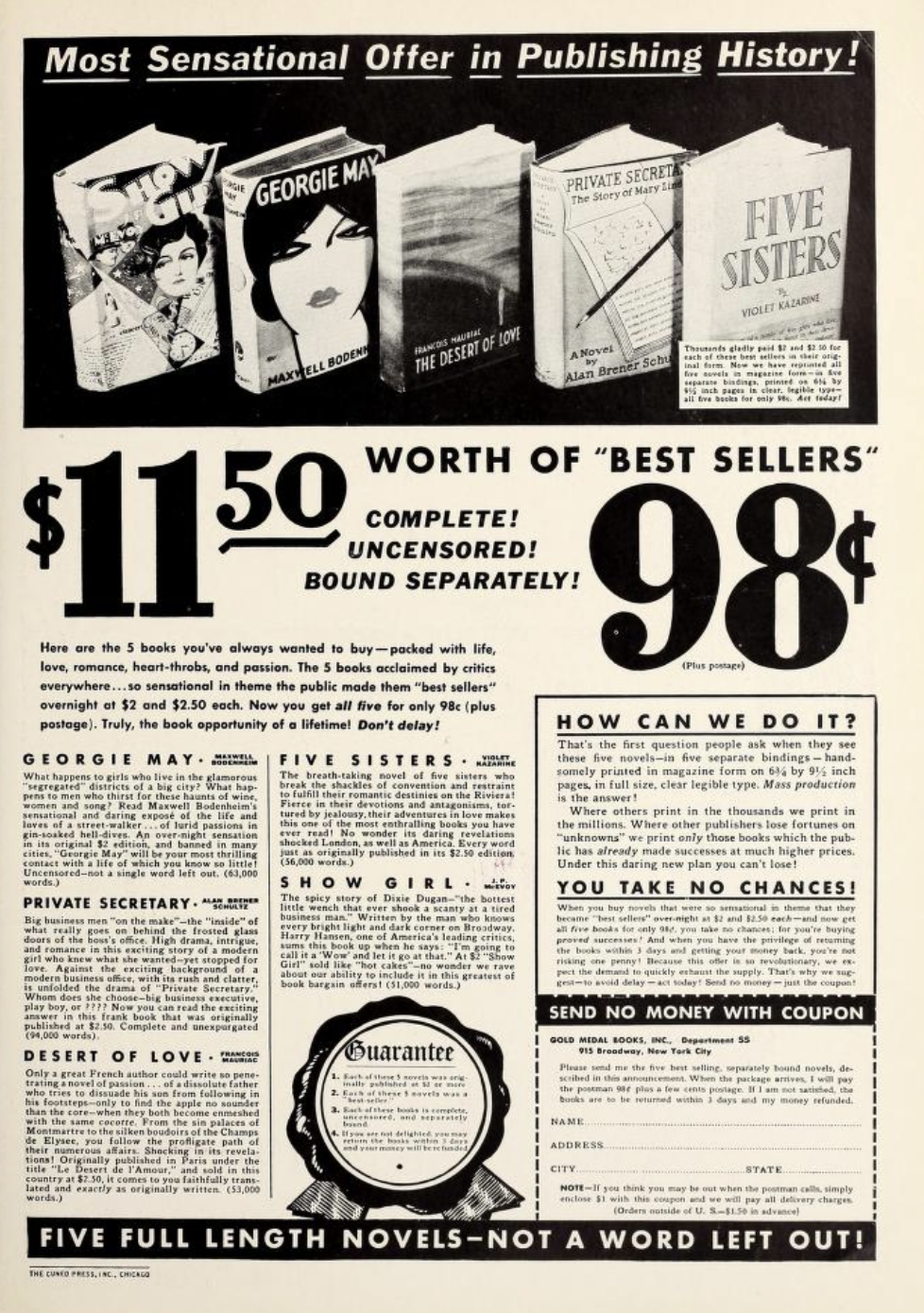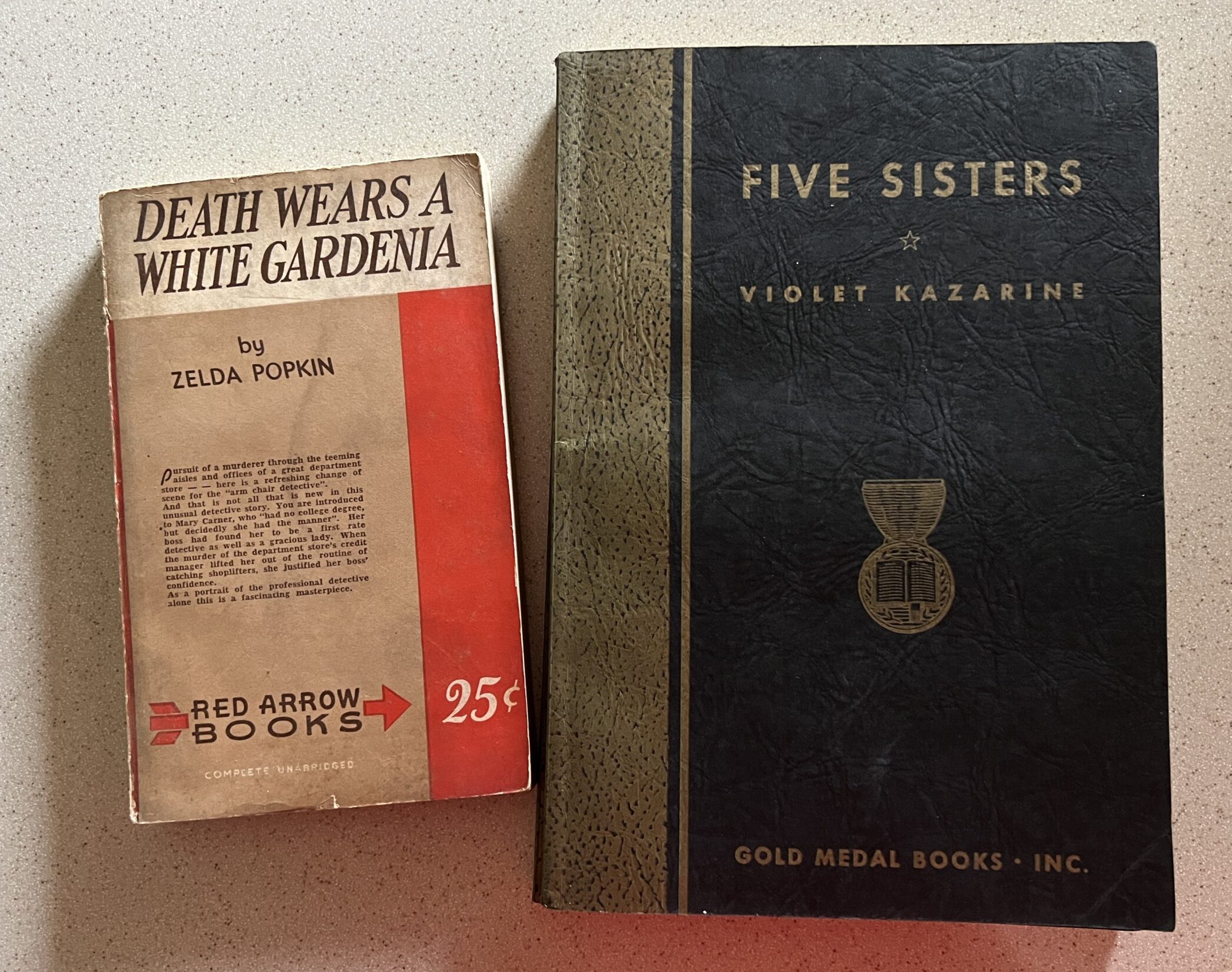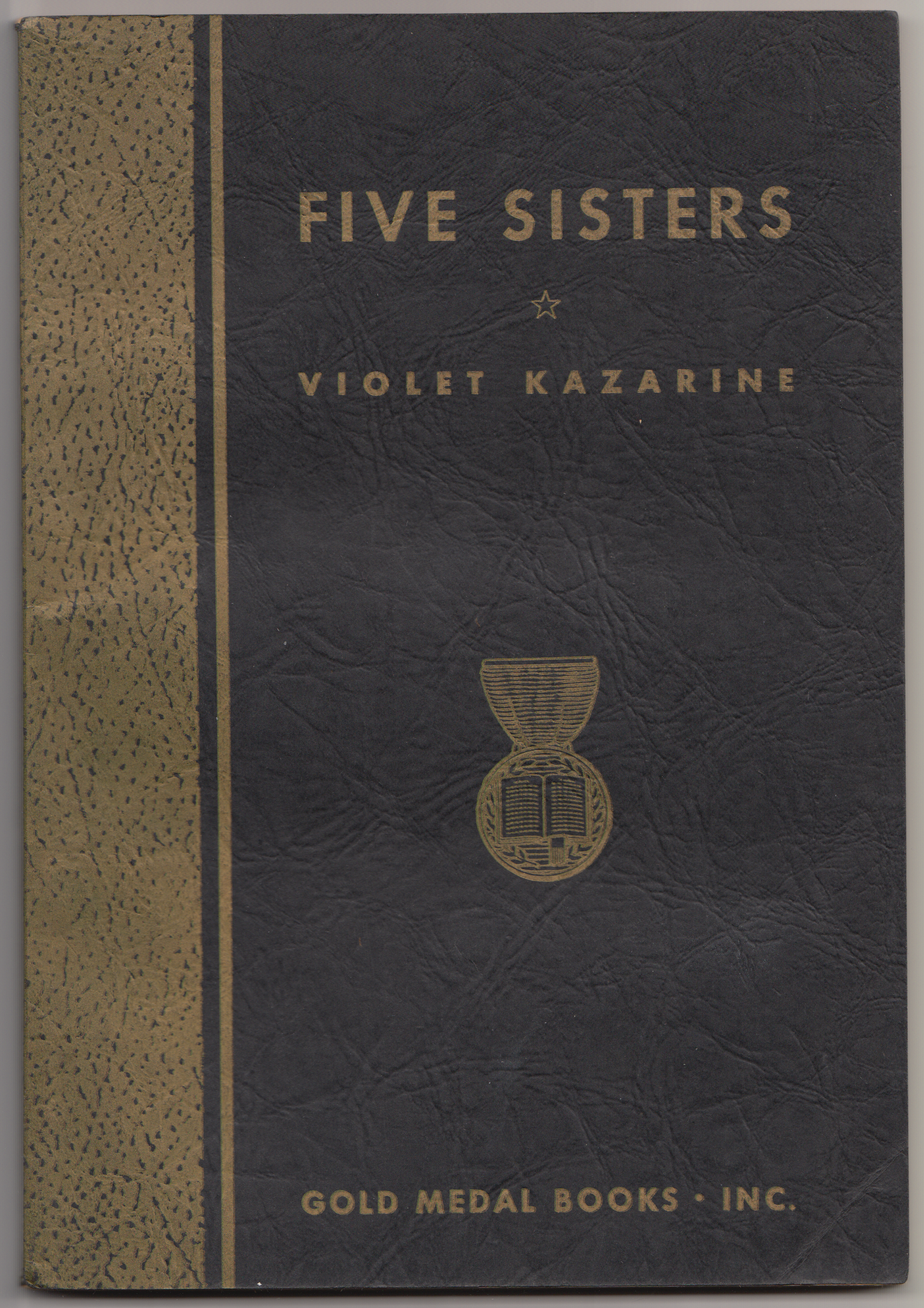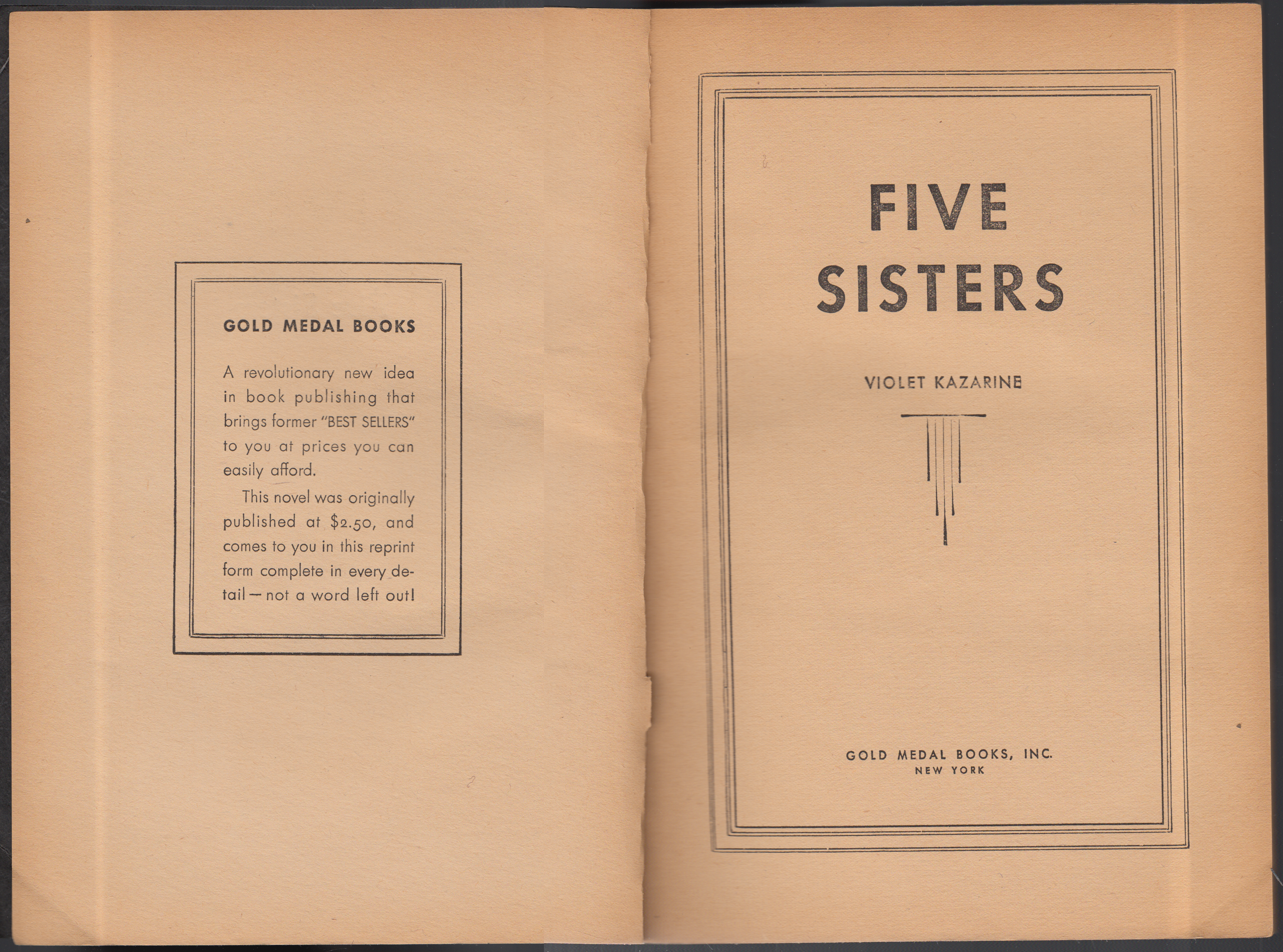Gold Medal Books, Inc. (New York, US)
Series dates: 1935
Size: 6.25″ x 9.25″
Revised 6/16/2023
The Gold Medal Books were a peculiar mail-order paperback publishing effort in the mid-1930s that produced five titles and a Federal Trade Commission cease and desist order for deceptive advertising in the late 1930s. The series is one of the worst I’ve encountered. This series and company are unrelated to the later Gold Medal Books published by Fawcett beginning in 1950.
Titles in the series include:
Georgie May, by Maxwell Bodenheim
Five Sisters, by Violet Kazarine
Show Girl, by J.P. McEvoy
The Desert of Love, by François Mauriac; Samuel Putnam (translator)
Private Secretary: The Story of Mary Linden, by Alan Brener Schultz
The firm’s president, Norman J. Ginsburg, appears to have been involved in the publishing of Jewish periodicals and advertising by mail in the 1920s and 1930s. The Bookbinding Magazine (1935, below) announces the new firm, located at 915 Broadway, New York, and its “new publishing idea.” That idea is to reissue older best sellers in a magazine format aimed at “non-buyers of books.” The price is 98 cents, which puts the titles in competition with common reprint series such as the Modern Library (at 95 cents, with both classic and contemporary literature). The odd size, two columns of text, low-grade titles, and the price seemed likely to doom this paperback experiment from the start. Unless you could get creative with advertising. Which they did.
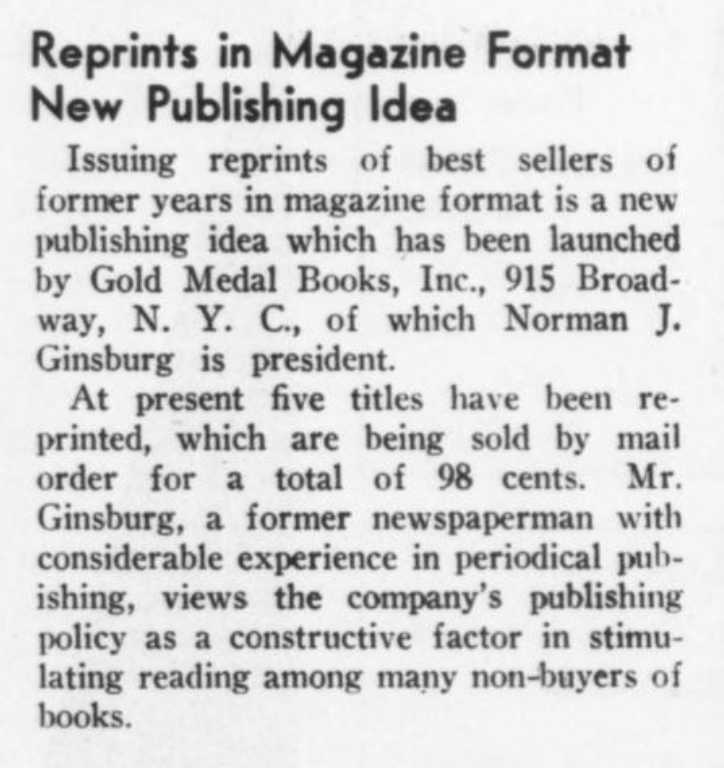 |
The Bookbinding Magazine 1935, vol. 21, issue 2. |
The mail-order plan used advertisements that appeared in a dozen periodicals in the mid-1930s. The advertising, later deemed deceptive, is shown below in a copy of the Silver Screen Magazine, March 1935. A coupon is sent to the publisher, and when the set of five books was delivered, the mailman collected the fee for the books and postage.
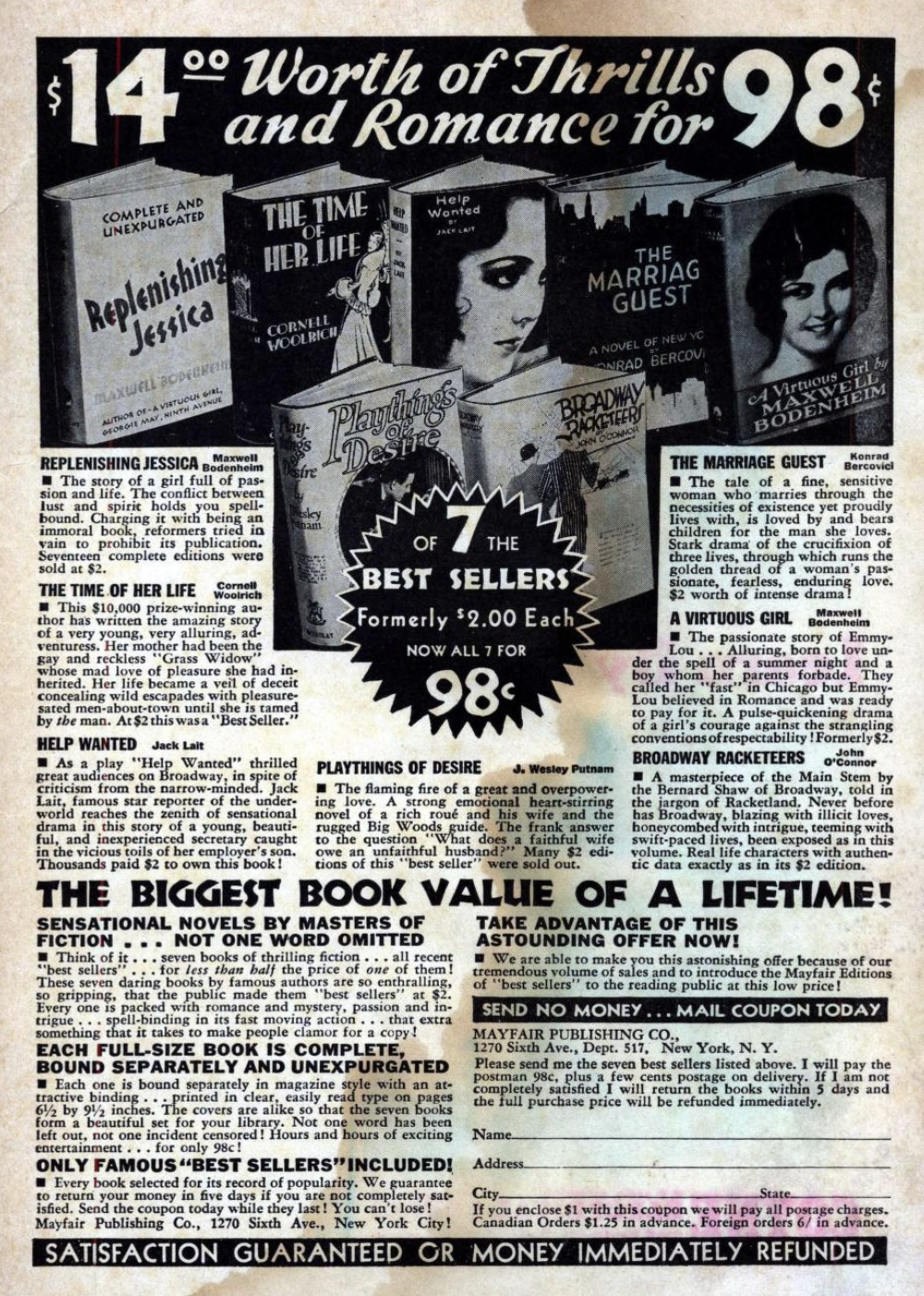 |
From Amazing Stories (vol. 10, no. 4, 1935), an advertisement similar to the above, but for the “Mayfair Editions.” While there is a different address, this may be Norman Ginsburg, given the similarities. I don’t have a copy of the Mayfair Editions titles, but they are of similar design and construction to the Gold Medal Books. This firm was involved in another FTC complaint, regarding deceptive advertising for a “learn how to play piano” book. There is another Mayfair Publications Co. (I’m unsure it’s related) documented at the Pulp Artists site. |
A summary of the complaint by the FTC against Gold Medal Books:
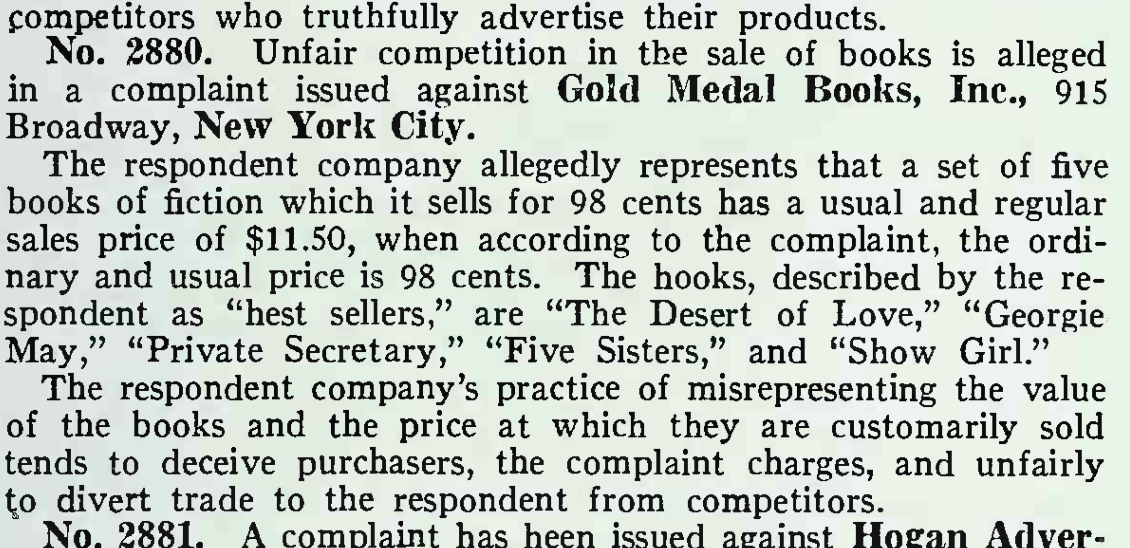 |
National Association of Broadcasters, NAB Report, July 2, 1936 |
Copies of a Gold Medal book are shown below. Undoubtedly those who sent in the coupon were shocked to receive five thin, comic book-sized paperbound titles, rather than the books shown in the advertisement (which were the original editions of the reprinted titles). The FTC ruling is here.
Curiously, the Cuneo Press of Chicago is included at the bottom of the advertisement. Cuneo was involved in other somewhat deceptive publishing schemes, including the Spencer Library. Cuneo probably printed and bound the series titles.
The size of the books is peculiar. Below is a typical paperback-sized title (from another obscure 1930s publisher, Red Arrow Books). The idea seemed to be that the non-reading public would be interested in fiction in paperback at this odd size, possibly because it was similar to magazines in format. Along with the odd size came two columns of text on each page. Altogether, a terrible format for a book.
The covers of the titles in the series are printed on heavier paper with a variegated pattern. The gold printing on the black paper may be meant to look like a quarter-bound book. It’s a lackluster and depressing book design. The book title, author, illustration of a gold medal, and publisher are on the front cover. This title is Five Sisters by Violet Kazarine. Kazarine was a pseudonym for the obscure English author Violet (White) Butler.
The spine is squared but blank except for the gold ink.
The back cover repeats, in reverse, the printed pattern from the front of the cover and is otherwise blank. The block of pages is stapled, and the cover is glued to the pages. This is a very modest binding style.
The half-title page and (blank) inside front cover. You can see the staples that hold the pages together.
A blurb for the series faces the title page: Gold Medal Books: A revolutionary new idea in book publishing that brings former “BEST SELLERS” to you at prices you can easily afford. This novel was originally published at $2.50 and comes to you in this reprint form complete in every detail – not a word left out!”
The copyright is to the original publisher, Convici-Friede, New York. “Printed in U.S.A.” The two-column arrangement of the text is unusual and, I believe, the only series book at this site with such a text arrangement.
The bad format and size, columns of text, shoddy binding, homely design, mediocre authors, and scammy advertising make the Gold Medal Books among the worst series ever produced.

